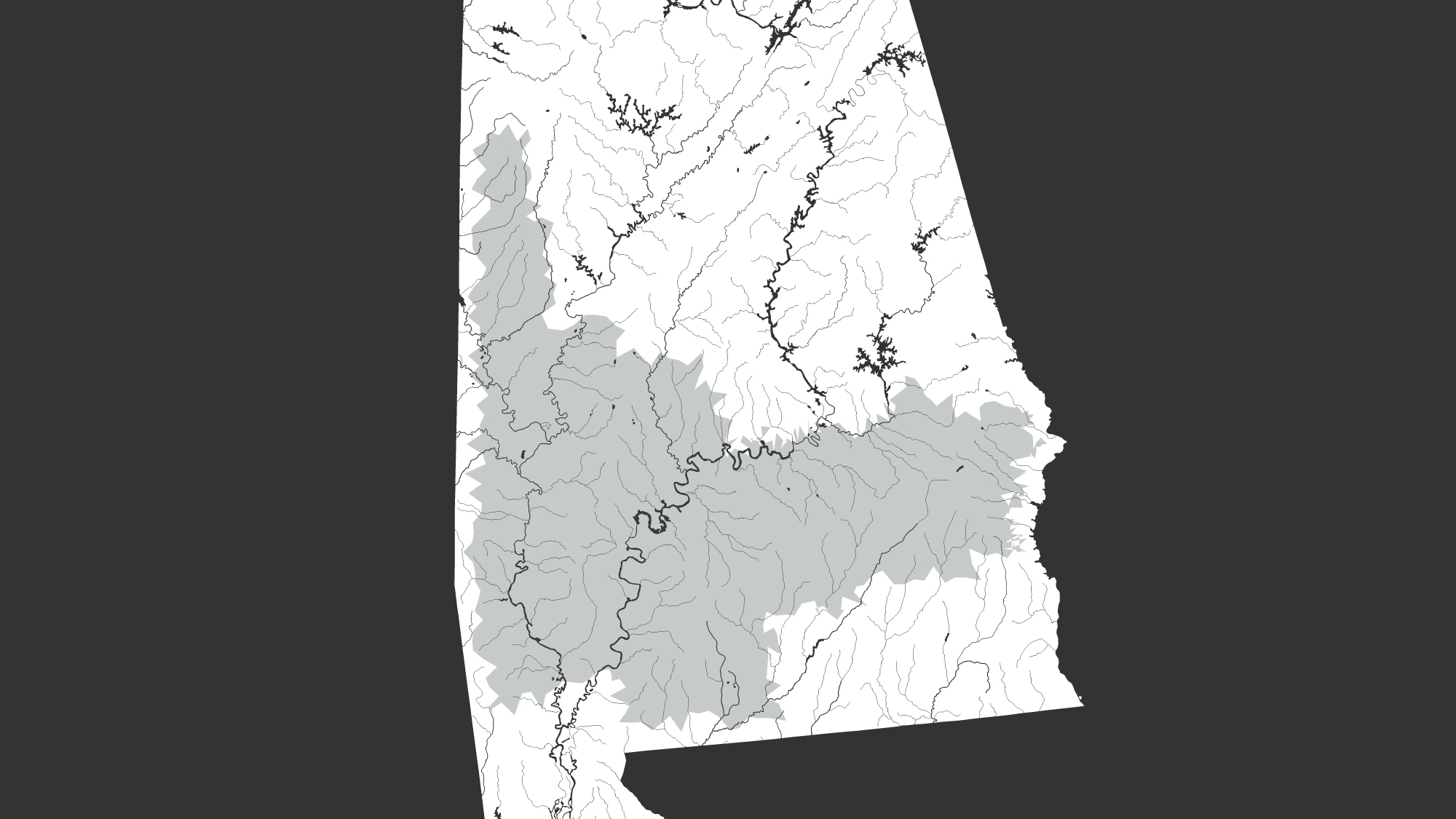The Alabama Black Belt’s historical high poverty rates, low homeownership rates, lower incomes and a lack of economic development are complicated matters that warrant attention, according to a report released today by the University of Alabama’s Education Policy Center.
The brief, titled “Poverty, Housing, & GDP in Alabama’s Black Belt,” begins with a historical look at poverty in the Black Belt, which researchers note has roots in slavery.
“Poverty in the Black Belt is not a new phenomenon, with historical roots tracing back to the post-Civil War Reconstruction, and Jim Crow eras when newly emancipated, formerly enslaved people were left without any money, property, or other resources needed to be successful,” the brief reads. “Instead, Black Codes and Jim Crow laws forced the formerly enslaved into sharecropping arrangements that were essentially an extension of the previous system of chattel slavery.”
The consequences of slavery and sharecropping hindered the Black Belt and its majority Black population following the Civil War by preventing the accumulation and transfer of intergenerational wealth, the report reads, which contributes to persistent poverty that continues today.
The center defines the Black Belt as consisting of 25 counties in the southern central and western areas, which includes all of Alabama’s majority minority counties. All 19 persistent poverty counties statewide are in the Black Belt.
Richard Fording, a political science professor at the University of Alabama and the co-author of “Disciplining the Poor: Neoliberal Paternalism and the Persistent Power of Race” and “Hard White: The Mainstreaming of Racism in American Politics,” told reporters during a briefing on the report Monday that the poverty in the Black Belt’s fundamental roots lie in the history of the exploitive economic system that persisted for many decades after Reconstruction.
“Which was based on racial segregation, but importantly, and maybe even primarily, a need to preserve the economic system that had been previously supported by slavery,” Fording said. Economic development was discouraged by that system, and inactively persistent, he said.
Fording explained that a lack of economic development and selective out-migration negatively impacts the Black Belt.
“There’s also the intense class and race segregation in the community that creates a dearth of social capital within the community,” Fording said. “And makes it even more difficult for communities to come together to solve these problems on their own, even if they could.”
Alabama’s average poverty rate is 17.6 percent, but the Black Belt’s average is 24 percent, with all 25 Black Belt counties being in the top 35 counties with the highest poverty, according to the report.
“Poverty is an even greater challenge for Black people in Alabama. Black or African Americans make up 26.8% of the state’s population but make up over 42 percent of people below the poverty level,” the report states. “The eleven Majority-Minority counties in Alabama (all located in the Black Belt) have an average poverty rate of 25.3 percent, greater the Black Belt average of 23.8 percent.”
Income inequality among white and Black Alabamians is highest in the states Black Belt, researchers wrote in the brief, noting that the Federal Reserve Bank of St. Louis found that “median Black/White income gaps vary considerably, but in all states White median household income is greater than Black median household income.”
“This is true in Alabama, where every $1 per White household median income, equated to $0.58 in Black household median income,” the brief reads. “The median household income of Majority-Minority counties ($33,075) is nearly $7,000 less than that of Majority-White ($39,852). Given all the Majority-Minority counties are in the Black Belt, it is unsurprising that the Black Belt suffers worse income and wealth inequality than the rest of the state.”
In over half of the Black Belt counties, more than four of every ten residents have subprime credit scores, the report states. Those low scores impact Black Belt residents’ ability to access capital and buy homes, researchers found.
In Dallas County 43 percent of the population have a credit score below 660, and just 58 percent live in homes they own or co-own, which is more than 10 percentage points below the state average, and 20 percentage points below the county with the highest homeownership rate, according to the report.
Despite passages of the federal Fair Housing Act of 1968, which was meant to prohibit discriminatory mortgage lending, selling, and renting practices, 1968—the gap between white and Black homeownership has widened, and today is the largest it’s been in 100 years, the report states.
“George Wallace has not been the governor of Alabama for 35 years, and we have to take responsibility for discussion and propose solutions in our era,” Stephen Katsinas, director of the university’s Education Policy Center, said during the briefing.
Good public policy starts with good data, Katsinas said.
“So we hope that this brief will help facilitate the discussion about these things,” Katsinas said.
Tuesday’s report was the third in a series of studies on the Black Belt, slated to be released by the center in the coming weeks. Other studies focus on access to STEM in K-12 schools, educational attainment and community college, COVID in the Black Belt, poverty and housing market, mean worker commute time and infrastructure, goods versus services GDP and profiles of Black Belt community leaders.
The “Black Belt 2022” series is a follow up to the center’s “Black Belt 2020” series of reports, which looked at First Class Pre-K in the Black Belt, labor force participation, unemployment, internet access, access to healthcare and how to define the Black Belt.





















































